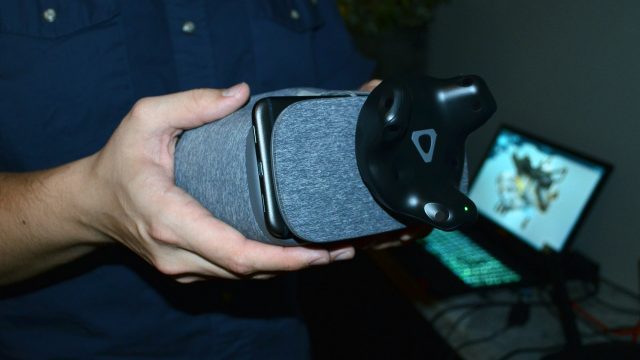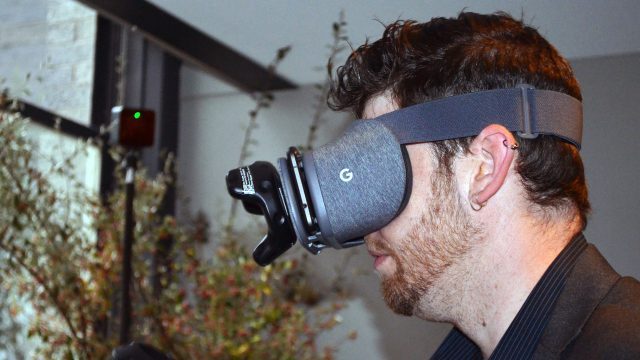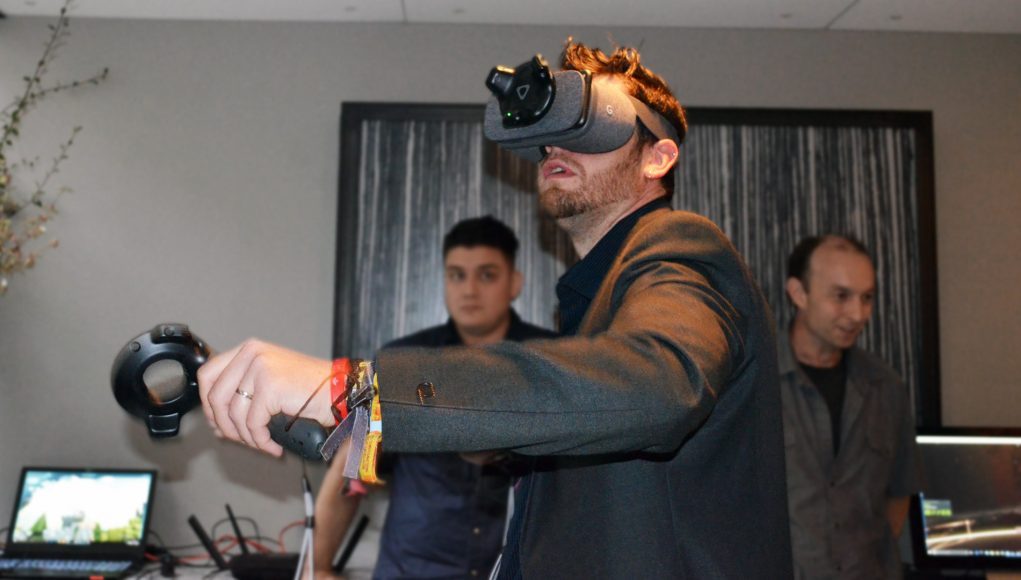Intel is exploring an interesting approach to making VR less expensive and more accessible. The company’s so-called ‘Portal Ridge’ system streams SteamVR content to a smartphone-based headset over WiFi while using the Vive Tracker and controllers for tracking of the headset and input.
At an Intel event hosted in San Francisco, I got to see the Portal Ridge proof of concept for myself. The system was composed of a powerful host computer running Steam, a Pixel smartphone, Daydream headset, as well as the Vive Tracker and controllers. The host computer was rendering the experience which was being streamed as a video over the phone’s built-in 5GHz 802.11ac WiFi. The Vive Tracker, attached to the front of the Daydream headset, allowed for full positional tracking and the controllers worked just like you’d expect for input.

Inside the headset the image showed clear signs of compression, and the latency left a good bit to be desired, but on the whole the system did its job well as a proof of concept, allowing me to play through The Lab just as I’d expect to do so on the Vive. With some additional optimization, the potential here seems promising, potentially offering end-users a high-end taste of VR at a fraction of the cost of buying a high-end PC headset. And while many of the cost savings come from relying on smartphone hardware that many already own anyway, Intel’s approach could also ease PC hardware requirements.
Intel wouldn’t be the first to think of streaming VR content to a smartphone. VRidge is one example that does just that. But Intel’s system takes things one step further by offloading some of the VR-specific rendering work to the phone itself, meaning that the host computer doesn’t need to be quite as powerful to provide the same experience.
Kim Pallister, Director of the Virtual Reality Center of Excellence at Intel, told me that the company worked with Valve to get access to the rendered VR frames on the host computer, prior to any distortion. Those raw, pre-adjusted frames are streamed to the smartphone where they receive their final treatment, like barrel distortion, chromatic aberration correction, and timewarp.

Pallister admits that those adjustments account for a small portion of the overall VR rendering workload when considering the power of a high-end gaming PC, but says that, for less capable computers, offloading that work could represent more significant gains in efficiency, thereby lowering the hardware bar for a VR-capable system.
While the proof of concept system I tried relied on the Vive Tracker and controllers (and necessarily, the SteamVR Tracking basestations) for positional tracking and input, Pallister says that future smartphones with built-in inside-out tracking technology could eliminate those added costs.
One vision of such a productized version of this tech might be a PC client / smartphone client application pair which would talk to each other. A relatively inexpensive mobile shell headset to house a smartphone already owned by the user, with the phone providing both inside-out tracking and hand-tracking, thereby eliminating the need for dedicated controllers. That could be a great, inexpensive starting point for VR, possibly with an option to upgrade to dedicated controllers for added precision for specific gaming tasks.
Intel says that they aren’t planning to productize this tech (as is tradition), but they are open to talking with potential partners.







